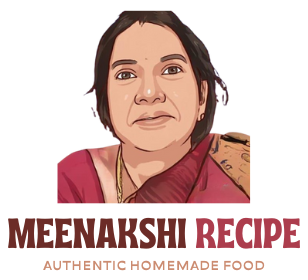Mixture, also known as Chivda, is a quintessential Indian snack loved by people across the country. This savory snack is a blend of ingredients such as fried lentils, nuts, rice flakes, spices, and occasionally a touch of sugar. Whether served during tea time, festivals, or as an anytime snack, mixture offers a burst of flavors with every bite. However, as delightful as it tastes, it’s essential to understand its calorie content and nutritional profile, especially for those mindful of their diet.
What is Mixture?
Mixture is a savory snack that varies in preparation across regions in India. Its core ingredients often include:
- Fried Lentils (Chana Dal and Moong Dal)
- Sev (fried chickpea flour noodles)
- Nuts (peanuts, cashews, etc.)
- Poha (flattened rice)
- Spices (chili powder, turmeric, curry leaves, etc.)
- Crispy elements (murukku pieces, boondi, or fried batter bits)
- Occasional Additions: Raisins, fried coconut slices, or a hint of jaggery/sugar.
Calories in Mixture
The calorie content of mixture depends on its preparation method and ingredients. On average:
- 1 cup (100g) of Mixture: Contains 550–600 calories
- 1 tablespoon (15g): Contains around 80–90 calories
Macronutrient Breakdown (100g of Mixture):
- Carbohydrates: 50–55g
- Protein: 10–15g
- Fat: 30–35g
- Fiber: 4–6g
Key Factors Influencing Calories:
- Oil Content: Fried ingredients like sev, nuts, and lentils significantly increase the calorie count.
- Nuts: Peanuts and cashews, while nutritious, are calorie-dense.
- Sugar: If sugar or jaggery is added, it contributes additional calories.
- Serving Size: Mixture is light but calorie-dense, so portion control is crucial.
Is Mixture Healthy?
Mixture can be both nutritious and indulgent. Here’s a look at its pros and cons:
Benefits:
- Rich in Protein: Lentils and nuts provide a good source of plant-based protein.
- Energy Boosting: High carbohydrate content makes it a quick energy snack.
- Tasty and Versatile: Its flavors and textures make it appealing and adaptable.
Drawbacks:
- High in Calories: Due to frying and nuts, it is calorie-dense and can contribute to weight gain if consumed in excess.
- Rich in Saturated Fat: Fried components add to unhealthy fat content.
- Low Fiber: Despite its ingredients, the overall fiber content is low, making it less filling.
Healthier Alternatives to Traditional Mixture
For a lighter and healthier version:
- Roast Instead of Fry: Roast poha, lentils, and nuts instead of deep-frying them.
- Use Air Fryer: Prepare components like sev and boondi in an air fryer to cut down on oil.
- Incorporate More Fiber: Add roasted chickpeas, puffed rice, or baked oats.
- Reduce Salt and Sugar: Use spices for flavor instead of excessive salt or sugar.
- Portion Control: Stick to small servings to enjoy the snack without overindulging.
Tips for Enjoying Mixture Mindfully
- Pair with Tea or Coffee: A small portion goes a long way when paired with your favorite beverage.
- Use as a Garnish: Sprinkle mixture over salads or chaats for an extra crunch without consuming it in large quantities.
- Store Properly: Keep it in an airtight container to maintain freshness, so you’re less tempted to finish it in one sitting!
- Combine with Healthier Snacks: Mix it with roasted peanuts or baked puffed rice to dilute its calorie density.
Conclusion
Mixture is undeniably delicious, but like most indulgent snacks, it is calorie-dense and should be consumed in moderation. By making a few adjustments to the recipe, you can enjoy this iconic Indian snack guilt-free. Whether you savor the traditional preparation or opt for a healthier twist, mixture remains a cherished part of Indian culinary traditions that brings joy to snack lovers everywhere.
So go ahead, enjoy your favorite mixture—just keep an eye on those portions!
